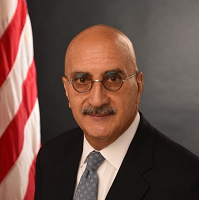
 By Gopal Khanna, MBA, Director, AHRQ &
By Gopal Khanna, MBA, Director, AHRQ &
Jeffrey Brady, MD, MPH, Director, AHRQ Center for Quality Improvement and Patient Safety
Twitter: @AHRQNews
As we seek to develop a national healthcare system that delivers true 21st century care, we are confronted by a COVID-19 pandemic that has identified numerous challenges. Among the most important: the need to provide correct diagnoses.
Definitive answers about diagnosis are critical not only for patients, but also for their families and others around them. Consequential questions gnaw at us: Are we diagnosing COVID-19 correctly? Are we missing cases? How do we know? How can we improve?
Diagnostic challenges predate COVID-19, of course. It is estimated that 12 million people per year are affected by diagnostic errors, with approximately four million suffering serious harm. The cost of these errors to the U.S. healthcare system may well exceed $100 billion a year.
Today, improving diagnosis carries new urgency. We join the hundreds of thousands of Americans who mourn lost friends and loved ones. And who among us is not moved by the dedicated and courageous work of thousands of doctors, nurses, and other healthcare workers? They have our admiration and our gratitude.
Every day, these clinical teams take great risks while working to understand the frightening reach of COVID-19. They must consider thousands of possibilities as they strive to identify which patients are in grave peril, and how to get them on the correct treatment pathway to better health.
In that light, we’d like to make sure that you didn’t miss a notable article published earlier this year about diagnostic error and COVID-19. Published in the Journal of Hospital Medicine, it offers a framework for considering COVID-19-related diagnostic errors. Examples among the framework’s eight error categories include:
- Classic: a missed or delayed diagnosis in patients with respiratory problems. This is currently the most common error, mostly because of the non-availability of tests and/or false negative tests.
- Anchor: missed or delayed diagnosis of a different condition because patients are “presumed COVID-19 positive.” Serious non-COVID-19 conditions may be missed in the absence of a full evaluation and reliable testing.
- Acute collateral: delayed diagnosis of an acute condition. This may occur when patients don’t seek care due to fear of contracting COVID-19 in a healthcare setting.
- Strain: missed or delayed diagnosis because of heightened attention to other COVID-19 patients in an overwhelmed healthcare system. Overcrowding and “hallway evaluations” is a known risk factor for delayed care and failure to diagnose.
The authors who conceived this framework, both AHRQ grantees, are recognized leaders in patient safety: Hardeep Singh, M.D., M.P.H., chief of the Health Policy, Quality & Informatics Program at the Michael E. DeBakey Veterans Administration Medical Center’s Center for Innovations in Quality, Effectiveness and Safety in Houston, and Tejal Gandhi, M.D., M.P.H., chief safety and transformation officer at Press Ganey Associates.
The framework that they created is a good one because it starts with COVID-19, but it does not end there. It’s as much about diagnostic accuracy viewed broadly. Their framework draws from things we already know about diagnosis and thoughtfully applies these insights to help address the new problems COVID has imposed.
Diagnostic safety is one of the most important issues on the next great frontier for patient safety research. The state of the science of measuring diagnostic safety is improving, and this progress should help pave the way to some real-world innovations, but so much more work remains.
Compelling discussions and wider awareness on this topic have been led by the Society to Improve Diagnosis in Medicine (SIDM). AHRQ has supported that work through conference grant funding, and recently several AHRQ presenters participated in SIDM2020, the organization’s 13th annual conference, which prominently featured issues related to diagnostic accuracy.
Adjustments that are being made in response to the COVID-19 pandemic can catalyze an improved diagnostic process going forward. Such a process will drive a data-driven, patient-centered, 21st century healthcare system. Since so many diagnoses occur in primary care settings, that venue can serve as an excellent focal point for improvement.
COVID-19 weighs heavily on us all. We’re hopeful that some of the changes that have resulted from the Nation’s battle against the pandemic will spark the long-term improvements in diagnostic safety that will strengthen the system’s ability to address COVID-19 and other challenges we face. Let’s seize the opportunity.
This article was originally published on AHRQ Views Blog and is republished here with permission.
